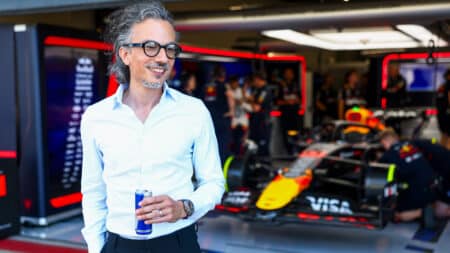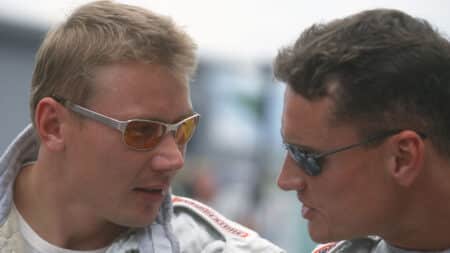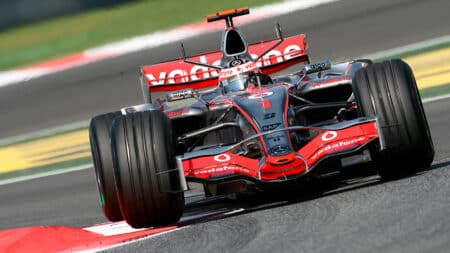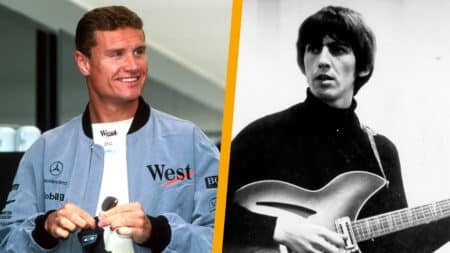
MPH: To the man trying to fill Christian Horner's shoes: good luck!
Laurent Mekies arrives as Red Bull F1 team principal with a series of immediate challenges to solve and long-term issues to tackle. He'll either sink or swim, says Mark Hughes
Never exactly one to kowtow to convention, Patrick Head. But then great race engineers never are.
It’s written in their DNA to kick against established thinking as they search for ‘the next big thing’, the ‘unfair advantage’ – the clever techie breakthrough that might expose another grey area in the rules and exploit it to the maximum.

For over 30 years, such thinking has been the sole motivating factor in Patrick Head’s professional life at Williams Grand Prix Engineering. His contribution to the sport, from the eras of ground effects to turbos to ‘active ride’ and on into these days of ever more restrictive rules, has been immense.
And as he steps away from the F1 frontline to concentrate on the technologies of the future at Williams’ hybrid power offshoot, we acknowledge that contribution with a special celebration of an incredible career in the March issue of Motor Sport – including a mammoth ‘Lunch with’ interview that breaks our record for length. It’s a glorious monster!
Typically, Patrick breaks a few myths in the issue as he reflects on some of the high points of life at Williams. He’s written, especially for us, the definitive account of the ‘gizmo’-laden masterpiece and game-changer, the FW14B in which Nigel Mansell totally dominated Formula 1 during 1992. In terms of technical excellence, those days are considered a ‘golden era’ when Grand Prix racing broke through new boundaries – to the point where the rule-makers had to drag the designers back and ban their clever systems for the good of the sport. But Patrick rejects the ‘halcyon days’ theory.

“There were more freedoms within the regulations in those days but I would not call it a ‘golden period’ for engineers,” he writes (without frills, as you’d expect).
“I have heard the FW14B described as one of the most technologically advanced racing cars ever built but the technologies we see today are of a very high standard right across the field and things like KERS and DRS are still a strong engineering challenge.”
In other words, the idea that F1 was more advanced 20 years ago than it is today is a fallacy. F1 cars in 2012 are created to a tighter rulebook, but they are vastly more sophisticated than they ever have been. Even to the layman’s eye (in other words, mine!), our new photoshoot of FW14B emphasises just how far F1 cars have come, particularly in terms of packaging and aerodynamics.

But even if the current generation of cars are vastly superior pieces of engineering than those of the early 1990s, what cannot be denied is that they are far uglier. As Pat Symonds predicts in our most recent podcast, the 2012 cars won’t be remembered for their aesthetic qualities – as the first sight of the new Caterham F1 confirms (it’s all to do with new regs lowering the noses, but not the front bulkheads, as Pat explains here).
Back in the issue, Patrick also talks about the drivers he’s worked with over the years, and as I highlight in Matters of Moment, his matter-of-fact verdict on Mansell again challenges convention. Let’s just say his view would not have been shared by the late Peter Warr, whose posthumous autobiography is reviewed this month…
From Williams and the analysis of ‘active ride’, we make a seamless shift (geddit?) on to Lotus and the car where the system was pioneered. Andrew Frankel’s piece on Colin Chapman’s final F1 car, the Type 92, is fascinating and complements Patrick’s article perfectly. Firsthand insight from Peter Wright and Tim Densham tells the story of how Chapman once again found inspiration from an idea that would change everything – in this case long after he had departed…
Elsewhere, Nigel Roebuck talks to Martin Brundle about his controversial move from the BBC to Sky – in his words, like going from Manchester United to Manchester City. If you’ve leapt to conclusions about his decision, take the time to read his side of the story. It’s quite revealing.

Personally, I have mixed feelings about this one. Part of me – a big part of me – resents having to pay Rupert Murdoch to watch F1. But I don’t resent having to pay for coverage per se, and I am intrigued by the plans Sky have for a dedicated channel. The BBC has done a great job, but I suspect the ‘evil empire’ is about to come up with a game-changer that is the TV equivalent of active ride…

Laurent Mekies arrives as Red Bull F1 team principal with a series of immediate challenges to solve and long-term issues to tackle. He'll either sink or swim, says Mark Hughes

Former McLaren F1 team-mates Mika Häkkinen and David Coulthard are set to renew old rivalries in a new Evening with... tour – they told James Elson all about it

In Formula 1, driver contracts may look iron-clad on paper, but history shows that some of its biggest stars have made dramatic early exits

Former McLaren F1 ace told James Elson about his private audience with The Beatles' George Harrison, who played an unreleased grand prix-themed song